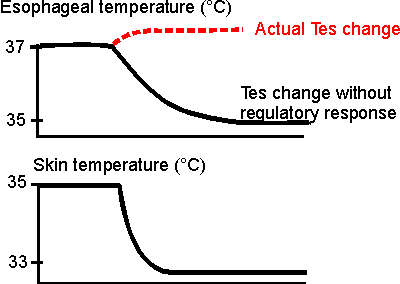
. Skin temperature was set at either 33 or 35C in our experiments. A temperature change of two degrees, between the limits of the neutral zone, may not sound like significant thermal stress. Consider this, though: had there been no regulatory response, equilibrium core temperature would have followed the skin temperature, degree for degree. A two degree decline in core temperature would, of course, be a major change. The regulatory response, i.e., the adjustment in skin blood flow prevented that. Core temperature not only changed only slightly but actually rose when skin temperature fell.
Day in, day out, we manage to keep ourselves in environments in which our skin temperatures remain within the neutral range -- on the low side of the range when we feel borderline chilly, on the high side when start thinking that it is time to take off the sweater. Core temperature need not be affected by the skin temperature changes thanks to appropriate, skin temperature-driven adjustments in skin blood flow.
Links:
rationale in experimental design(with
links to methods pages)
Summary data from experiments
next pg
return to index page